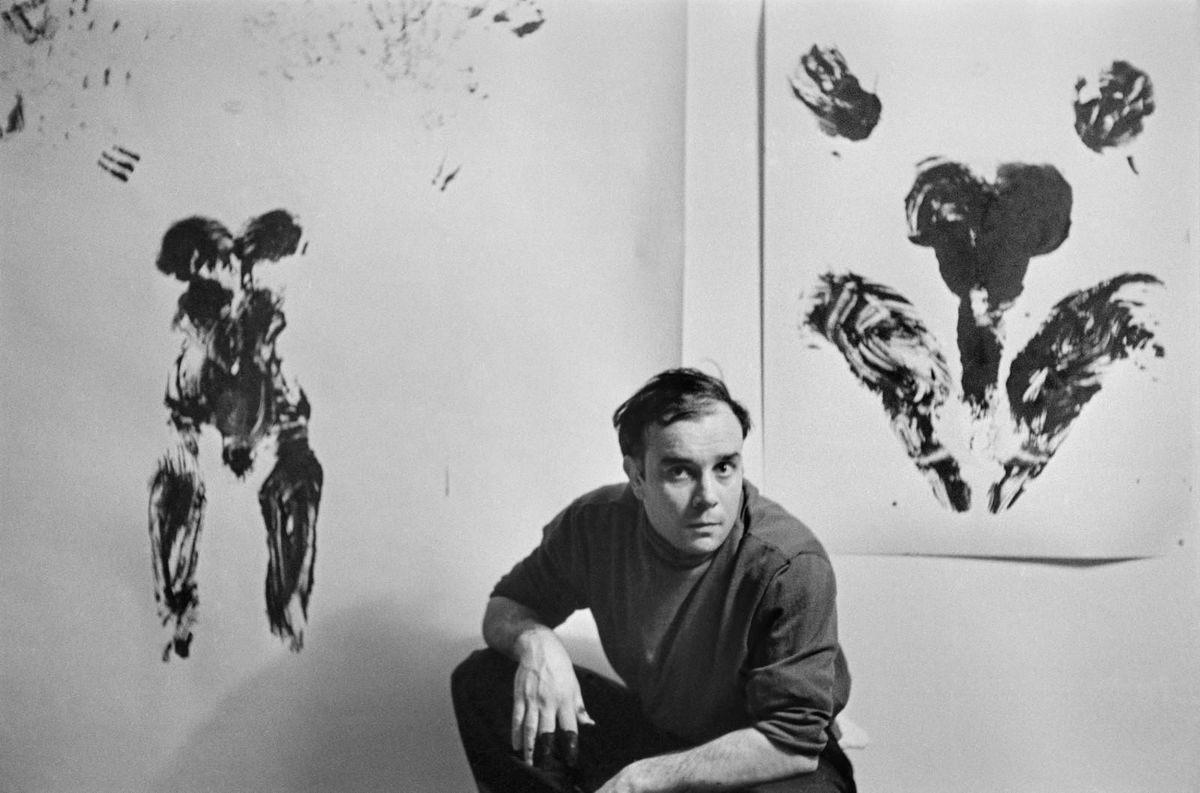Please touch: An unusual nude performance is restaged decades after artist’s death

By Jacqui Palumbo, CNN
(CNN) — Twice a week this spring, a nude performance artist sits inside a small wooden box in a New York gallery waiting to be touched. Through holes on each side of the box, visitors’ arms reach in and out, encountering skin or hair; lingering to determine the body part or quickly retreating. It’s a form of fast intimacy, uncomfortable, revealing, and perhaps, for some, profound.
Conceived nearly seven decades ago by the French artist and ‘enfant terrible’ Yves Klein, the audacious work, which he titled “Sculpture Tactile,” was never carried out during his lifetime — according to his own writings in 1957, he acknowledged he would have “had the police on my back right away” for doing so. But now, with rules signposted about appropriate behavior and consent — and a nearby guard — to keep the performance artist safe, the work can today be experienced (literally) firsthand at “Yves Klein: The Tangible World” at Lévy Gorvy Dayan on the Upper East Side.
In Klein’s short life — he died of a heart attack at age 34 — he made provocative, experimental works in the period after World War II, exhibiting monochrome paintings in his signature blue pigment, directing nude models to imprint their painted bodies on canvas and in one instance hosting a gallery show of an entirely empty room.
“Yves Klein: The Tangible World” brings together many of the artist’s lesser-seen works. They largely focus on the body, from Klein’s large-scale paintings made from “living paintbrushes” — his paint-dipped models — to a series of fire-based pieces that involved blowtorching canvas around the figures of women.
“I wanted to show Yves Klein’s love for the body, and the aliveness that the body represents,” said Dominique Lévy, a co-founder of the gallery, which represents Klein’s estate. “I feel it’s relevant today to bring (through) that deep, human force of life.”
At the time Klein was working, abstract movements had taken hold of the art world, while conceptual art was just beginning to germinate. Klein’s incorporation of performance, his emphasis on process and his quest to harness the ineffable would later become markers of movements in the 1960s.
“He’s the first artist to really incorporate performance as an artistic act and as a practice,” Lévy said. The atrocities of war, she added, had profoundly influenced creative expression and how artists conveyed the human experience. “The ’50s were a moment of rebuilding and rebirth and how you approach the body. And at the same time, it was an incredible period of freedom.”
Reimagined for today
But staging Klein’s works in contemporary contexts requires contemporary considerations. The artist has been criticized for objectifying women — the models who acted as living paintbrushes were viewed as instruments for the works, after all, though one has since spoken about what she described as the respectful nature of the collaboration. And offering up a box where visitors can freely and blindly touch a naked person must be carefully planned.
Recently, a participant in a 2010 Marina Abramović exhibition at the Museum of Modern Art in New York — which required visitors to pass between two naked artists at the entrance — sued the museum for allegedly failing to protect him from multiple instances of sexual assault. (MoMA has since moved to dismiss the suit.) Ten years ago, an arts writer who participated in the very first performance of “Sculpture Tactile” wrote lightheartedly about the experience for ArtNews, but noted that he and others were groped during the period it was installed at the art fair Independent Projects in New York.
For one of the two performance artists involved in this iteration the experience has been “affirming” and “beautiful.” Hugo Alexander-Rose has spent multiple four-hour periods sitting in the small, enclosed sculpture with a cushion to stay comfortable and his phone in order to signal if he needs water, food, a break or help. As a figure model at the School of Visual Arts, he’s used to sitting in stillness for long durations for art’s sake. And, as a trans man, he told CNN he was curious what it would be like to be engaged with through touch alone, without the snap judgements of sight.
“People make a lot of assumptions based on first seeing me or first hearing my voice — especially cisgender people,” he said in a phone call. “Sometimes people’s hands will reach in, and they’ll touch my top surgery scar. And… you don’t know their viewpoints on trans people. They don’t know what I look like, I don’t know what they look like, besides their hands. So it’s interesting being able to connect with people in that way.”
Lévy noted that she isn’t sure if Klein would have only included women in “Sculpture Tactile” — his writings describe hypothetical models as “beautiful naked models with very round shapes” — but she emphasized that she doesn’t think the point of the piece “is about the sex of the person” and that “retroactively rewriting (his) intentions is detrimental.”
“It’s more about that uncomfortable point of contact” with the human body, she explained of the sculpture.
Alexander-Rose said that some people have been vocally nervous about participating, while others have shared meaningful connections with him. Some thank him for the privilege to touch him.
“One person… cupped their hand to my cheek, and held that for a little bit and didn’t say anything — we were both existing in silence,” he recalled. “And they took their hand out and I thought I heard them start crying. It was a really powerful and really moving experience.”
“It really urges people to push past their own discomfort. And investigate that (feeling) and lean into it and learn something new.”
The-CNN-Wire
™ & © 2024 Cable News Network, Inc., a Warner Bros. Discovery Company. All rights reserved.